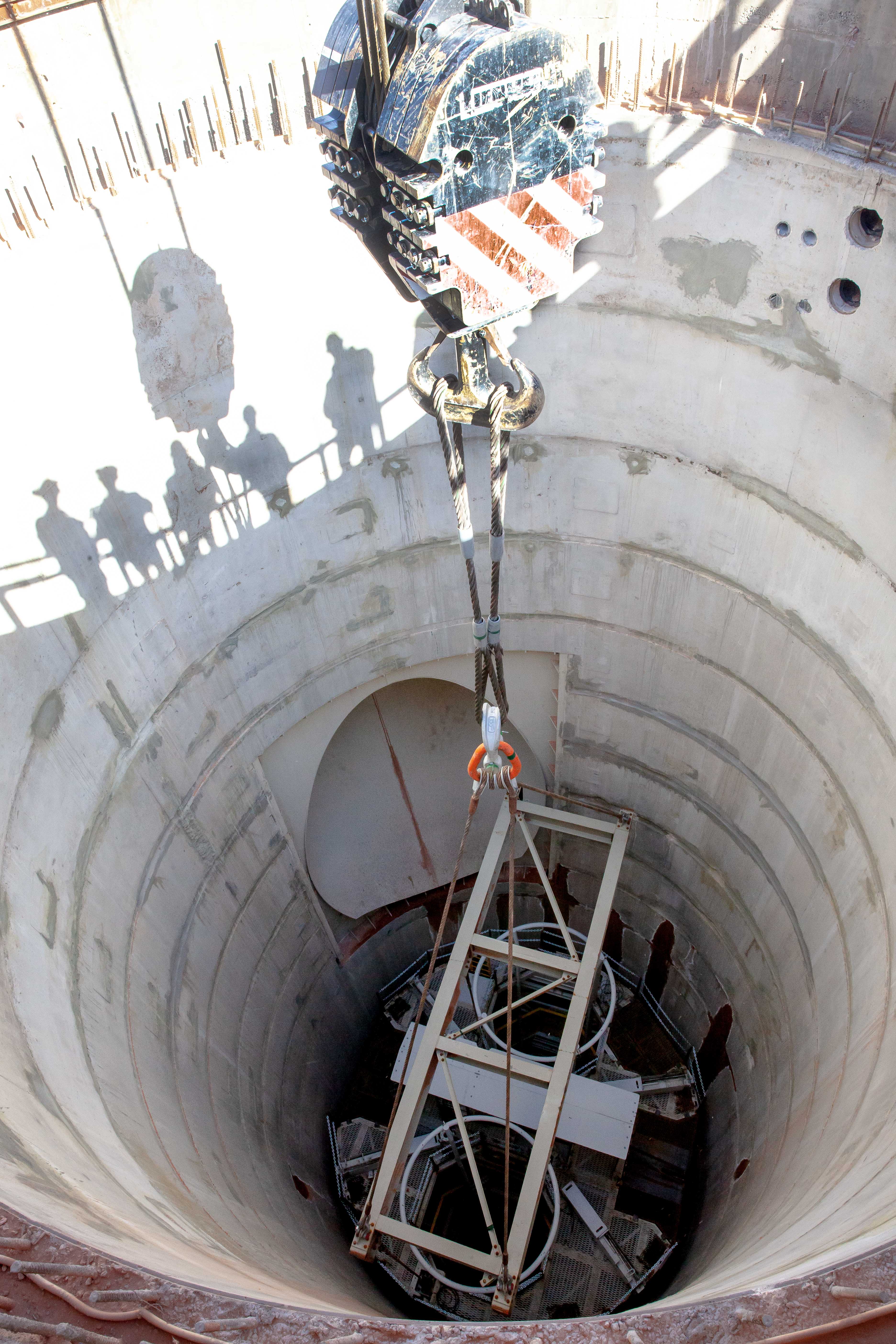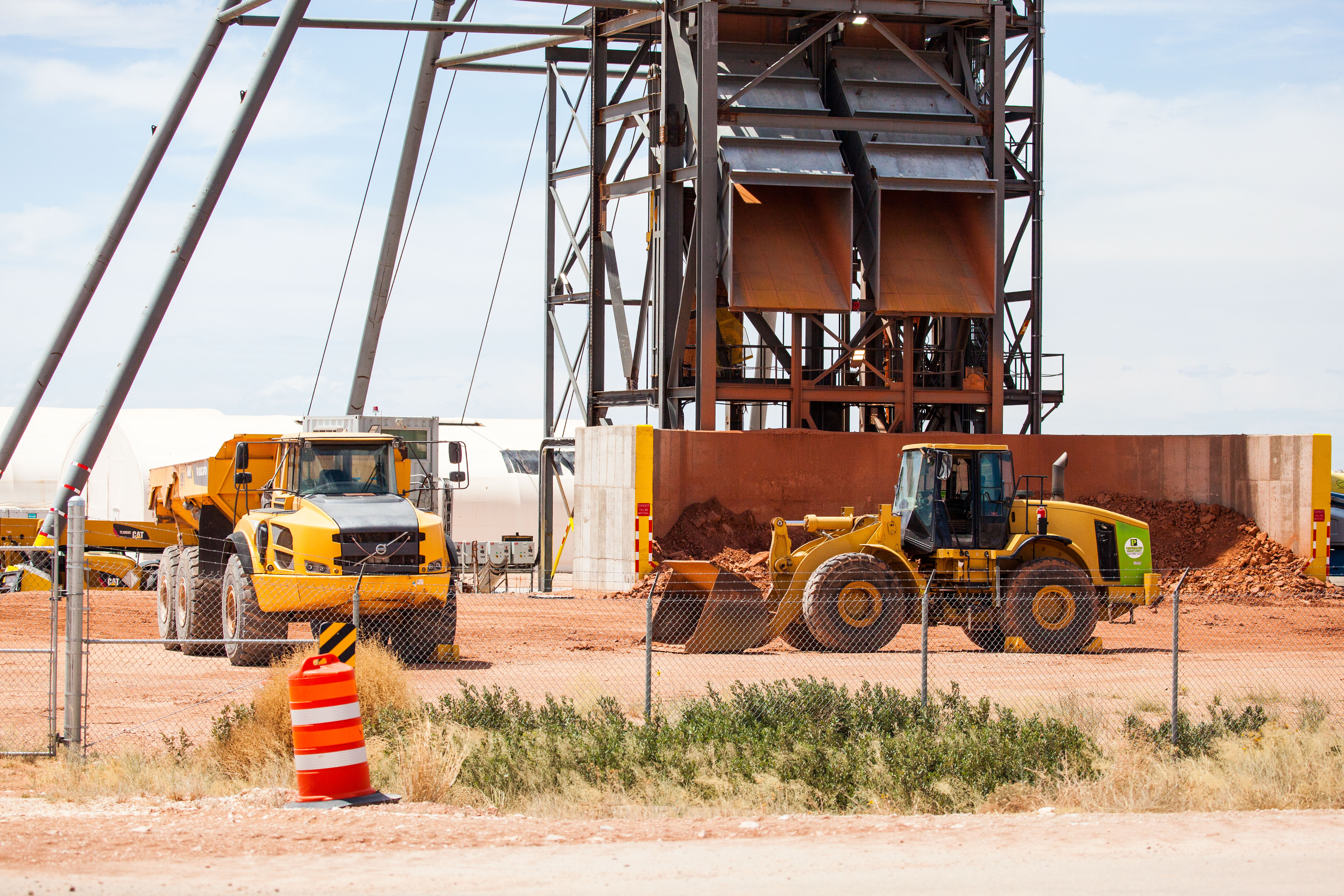
Women’s History Month Spotlight: Kimberly Briones, Waste Handling Technician
March 20, 2023
Women’s History Month Spotlight: Laura Garcia, Fire Protection Engineering
March 8, 2023WIPP Team Achieves Halfway Mark for Utility Shaft Sinking

CARLSBAD, N.M. – Progress continues on the new Utility Shaft at EM’s Waste Isolation Pilot Plant (WIPP) as shaft-sinking crews recently surpassed the midway point at 1,076-feet deep.
“The Utility Shaft or Shaft #5 is of great importance to WIPP and our ability to continue the Department’s critical national mission of safely disposing defense transuranic waste,” said Acting Carlsbad Field Office Manager Mark Bollinger. “When completed, this shaft will be part of the new permanent ventilation system that will allow us to provide critical airflow to the underground workforce.”
When completed, the full shaft depth will be 2,275 feet, with the team now halfway to the WIPP repository depth of 2,150 feet.
Workers completed the construction of concrete liner in the shaft to a depth of 873 feet in January 2023. The team is currently performing shaft excavation activities of drilling, blasting, mucking, geological mapping, and the installation of ground support. These activities will be repeated until the station depth is reached at 2,150 feet.
The new shaft and a permanent ventilation system known as the Safety Significant Confinement Ventilation System (SSCVS) are part of a capital investment in upgrading WIPP’s infrastructure so the facility can operate safely and compliantly for decades to come. When finished, the SSCVS will triple the airflow to the WIPP underground from the current 170,000 cubic feet per minute (cfm) of filtered ventilation to as much as 540,000 cfm.
“It’s exciting to see the progress that is being made,” said Ken Harrawood, program manager for Salado Isolation Mining Constructors (SIMCO), WIPP’s management and operations contractor. “It cannot be understated the importance of the work that is being done to complete the Utility Shaft. I can’t say enough about how well our subcontractor is performing.”

The blasting and excavation occurs around the clock. Workers drill holes and set explosive charges in half of the shaft circle. Rubble from the subsequent explosion is scooped by remote-controlled mechanical clamshells on the bottom of a cylindrical three deck work stage known as the Galloway hangs in the shaft. The mechanical clamshells dump the rubble into buckets that are raised through bucket wells in the Galloway to the surface. The muck (rubble) is dumped into chutes and onto a concrete pad where a front-end loader scoops it into a waiting truck to be hauled away.
When completed, the new Utility Shaft will be WIPP’s largest shaft at 26 feet in diameter with two 3000-foot drifts being excavated at the 2,150-foot level to align with the rest of the WIPP underground.
